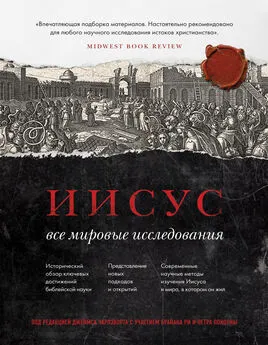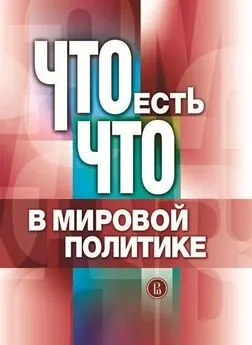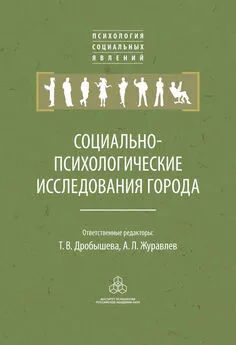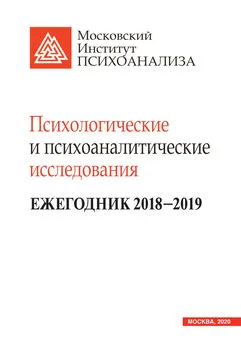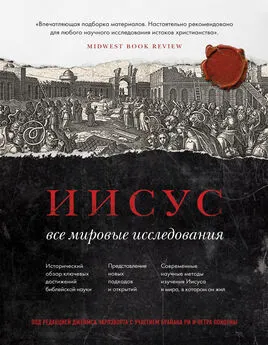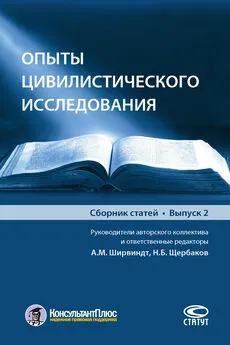Коллектив авторов - Иисус. Все мировые исследования
- Название:Иисус. Все мировые исследования
- Автор:
- Жанр:
- Издательство:Эксмо
- Год:2021
- Город:Москва
- ISBN:978-5-04-155616-7
- Рейтинг:
- Избранное:Добавить в избранное
-
Отзывы:
-
Ваша оценка:
Коллектив авторов - Иисус. Все мировые исследования краткое содержание
Иисус. Все мировые исследования - читать онлайн бесплатно ознакомительный отрывок
Интервал:
Закладка:
394
О Нав 3–4 см.: Thomas B. Dozeman, «The yam-sûp in the Exodus and the Crossing of the Jordan River», CBQ 58 (1996): 407–416; J. Alberto Soggin, Joshua: A Commentary (OTL; Philadelphia: Westminster, 1972), с. 43–67, особ. с. 54; Volkmar Fritz, Das Buch Josua (HAT I/7; Tübingen: Mohr Siebeck, 1994), с. 41–56.
395
Я все же полагаю, что девтерономическая история развивалась значительно сложнее, чем изложено здесь (см., напр.: Jeremy M. Hutton, The Transjordanian Palimpsest: The Overwritten Texts of Personal Exile and Transformation in the Deuteronomistic History [BZAW 396; Berlin: de Gruyter, 2009]), представленная здесь концепция учитывает лишь модель двойной редакции девтерономической истории Кросса; см.: Frank M. Cross, Canaanite Myth and Hebrew Epic: Essays in the History of the Religion of Israel (Cambridge: Harvard University Press, 1973), с. 274–289; Richard D. Nelson, The Double Redaction of the Deuteronomistic History (JSOTSup 18; Sheffield: JSOT Press, 1981); Richard E. Friedman, The Exile and Biblical Narrative: The Formation of the Deuteronomic and Priestly Works (HSM 22; Chico, Calif.: Scholars Press, 1981); Baruch Halpern, The Constitution of the Monarchy in Israel (HSM 25; Chico, Calif.: Scholars Press, 1981) и работы нескольких других учеников Кросса.
396
См., напр.: Dozeman, « yam-sûp in the Exodus»; см. также: Hans-Joachim Kraus, «Gilgal: Ein Beitrag zur Kultgeschichte Israels», VT 1 (1951): 181–199; ET: «Gilgal: A Contribution to the History Of Worship in Israel», Reconsidering Israel and Judah: Recent Studies on the Deuteronomistic History (ed. G. N. Knoppers and J. G. McConville; SBTS 8; Winona Lake, Ind.: Eisenbrauns, 2000), с. 163–178; Soggin, Joshua , с. 51–54; David Daube, The Exodus Pattern in the Bible (All Souls Studies 2; London: Faber & Faber, 1963), 11; ср.: Jan Wagenaar, «Crossing the Sea of Reeds (Exod 13–14) and the Jordan (Josh 3–4): A Priestly Framework for the Wilderness Wandering», Studies in the Book of Exodus: Redaction – Reception – Interpretation (ed. M. Vervenne; BETL 126; Leuven: Peeters, 1996), с. 461–470. Следует отметить, что ханаанское происхождение этого мифологического сюжета не доказывает неизраильский характер мифемы. Как убедительно доказывает Марк Смит, различия в израильской и ханаанской культурах были результатом процесса дифференциации общего ханаанского субстрата, а не принципиального и изначального различия ( The Early History of God: Yahweh and the Other Deities in Ancient Israel [2 nded.; Grand Rapids: Eerdmans, 2002]).
397
Недавний обзор деления на основные источники: Robert D. Miller, «Crossing the Sea: A Reassessment of the Exodus», ZABR 13 (2007): 187–193. Точные формулировки, естественно, варьируются, см.: Brevard S. Childs, The Book of Exodus: A Critical, Theological Commentary (OTL; Philadelphia: Westminster, 1974), с. 218–221; William H. C. Propp, Exodus 1–18: A New Translation with Introduction and Commentary (AB 2; New York: Doubleday, 1999), с. 461–464, 476–484; Richard E. Friedman, Who Wrote the Bible? (San Francisco: Harper & Row, 1987, с. 251 [На русском: Ричард Фридман, Как создавалась Библия? М.: Эксмо, 2011].
398
Bernard Batto, Slaying the Dragon: Mythmaking in the Biblical Tradition (Louisville: Westminster John Knox, 1992), с. 128–152, особ. с. 136–144; см. также: Childs, Exodus , с. 223–234; Cross, Canaanite Myth , с. 103–105.
399
Jeremy M. Hutton, «Jordan River», NIDB 3:385–392; см. также: Propp, Exodus 1–18, с. 510.
400
Cross, Canaanite Myth , с. 112–144; ср.: Childs, Exodus , с. 251. Утверждение о «мифическом происхождении» Исх 15 не должно порождать утверждение, что песнь полностью мифологична. Как показал Кросс, при своеобразном использовании Израилем ханаанских тропов происходила значительная демифологизация.
401
Против – Batto, Slaying the Dragon , с. 144.
402
Там же, c. 136.
403
В издании: Miller, «Crossing the Sea» разграничена вездесущая «морская» традиция (Исх 13–14, Чис 33, Ис 43:16–17, Ис 63:11–12; Пс 65:6; Пс 76:19–20; Пс 77:13) и, по-видимому, девтерономическая традиция «Тростникового моря» (Втор 11:4–5; Нав 2:10; 4:23–24; 24:6–7; Суд 11:16; Пс 105:7, 9, 22; 135:13, 15; ср.: Исх 15, Неем 9:9, 11), которая используется и в Священническом кодексе («источнике P»).
404
См., напр.: Hutton, «Jordan River», с. 391.
405
См., напр.: Gray, I and II Kings , с. 365; Burke O. Long, 1 Kings with an Introduction to Historical Literature (FOTL 9; Grand Rapids: Eerdmans, 1984), с. 199–200, и упомянутую литературу.
406
Stephan Bekaert, «Multiple Levels of Meaning and the Tension of Consciousness: How to Interpret Iron Technology in Bantua Africa», Archaeological Dialogues 5 (1998): 6–29.
407
См., напр.: Jeremy M. Hutton, «The Left Bank of the Jordan and the Rites of Passage: An Anthropological Interpretation of 2 Samuel XIX», VT 56 (2006): 470–484.
408
Brown, «What Was John», с. 44; см. также: Weinfeld, «Extent of the Promised Land»; Jobling, «Jordan».
409
Brown, «What Was John», с. 45. В этой связи он предполагает: «Действие было обрядом перехода в более чем метафорическом смысле» (р. 46). И Браун, и Доузман (« yam-sûp in the Exodus», с. 414) называют пересечение Иордана «обрядом перехода», но ни одни из них не анализирует этот акт в рамках теории Арнольда ван Геннепа.
410
В качестве примера ранних работ, посвященных связи 2 Цар 19 с этим метафорическим образом, см.: John Lightfoot, Horae Hebraicae et Talmudicae in Quattuor Evangelistas (ed. J. B. Carpzov; Leipzig, 1670); позднее опубликовано на английском: Horae Hebraicae et Talmudicae: Hebrew and Talmudical Exercitations (4 vols.; Oxford: Oxford University Press, 1859), 1:327–333, особ. 330.
411
Hutton, «Left Bank».
412
Там же, с. 473, прим. 10.
413
Там же, с. 473–474.
414
Там же, с. 474.
415
Arnold van Gennep, The Rites of Passage (trans. M. B. Vizedom and G. L. Caffee; Chicago: University of Chicago Press, 1960) [На русском: Арнольд ван Геннеп . Обряды перехода. Систематическое изучение обрядов. М., 1999]; Victor Turner, The Ritual Process: Structure and Anti-Structure (1969; repr., Ithaca, N. Y.: Cornell University Press, 1977);); Max Gluckman, «Les Rites de Passage», Essays on the Ritual of Social Relations (Manchester: Manchester University Press, 1962), с. 20–25; Mary Catherine Bateson, «Ritualization: A Study in Texture and Texture Change», Religious Movements in Contemporary America (ed. I. I. Zaretsky and M. P. Leone; Princeton: Princeton University Press, 1974), с. 150–165; Catherine Bell, Ritual Theory, Ritual Practice (New York: Oxford University Press, 1992), с. 88–93; David P. Wright, Ritual in Narrative: The Dynamics of Feasting, Mourning, and Retaliation Rites in the Ugaritic Tale of Aqhat (Winona Lake, Ind.: Eisenbrauns, 2001), с. 11–13; Bruce Lincoln, Emerging from the Chrysalis: Rituals of Women’s Initiation (New York: Oxford University Press, 1981), с. 99–101; Carol W. Bynum, «Women’s Stories, Women’s Symbols: A Critique of Victor Turner’s Theory of Liminality», Anthropology and the Study of Religion (ed. R. L. Moore and F. E. Reynolds; Chicago: Center for the Scientific Study of Religion, 1984), с. 105–125; Terence S. Turner, «Transformation, Hierarchy and Transcendence: A Reformulation of van Gennep’s Model of the Structure of Rites of Passage», Secular Ritual (ed. S. F. Moore and B. G. Meyerhoff; Assen: Van Gorcum, 1977), с. 53–70, цит. с. 60–64; W. S. F. Pickering, «The Persistence of Rites of Passage: Towards an Explanation», British Journal of Sociology 25 (1974): 63–78; Louise Carus Mahdi, Nancy Geyer Christopher, and Michael Meade, eds., Crossroads: The Quest for Contemporary Rites of Passage (Chicago: Open Court, 1996); R. L. Grimes, Deeply into the Bone: Re-Inventing the Rites of Passage (Berkeley: University of California Press, 2000); R. A. Segal, «Victor Turner’s Theory of Ritual», Zygon 18 (1983): 327–335.
416
Впервые я сформулировал данную интерпретацию перехода через Иордан в следующей работе: Transjordanian Palimpsest , см. особ. с. 364–377.
417
О том, что в 4 Цар 2 под угрозой был статус Илии, см. также: Havrelock, «Jordan River», с. 163–166, особ. с. 165; Long, 2 Kings , с. 28, 31; Rofé, Prophetical Stories , с. 44–48; White, Elijah Legends , с. 3, 8–11, и см. библиографию в третьем источнике, прим. 1; Mordechai Cogan and Hayim Tadmor, II Kings: A New Translation with Introduction and Commentary (AB 11; Garden City, N. Y.: Doubleday, 1988), с. 34; Sweeney, I and II Kings , с. 273–274.
418
Pars pro toto (лат. – «часть вместо целого») – прием речи, когда называется часть предмета вместо целого предмета. – Прим. ред.
419
В кн.: Avi-Yonah, Madaba Mosaic Map , с. 38, отмечено: «Обычный путь из Галилеи к низовьям Иордана должен был проходить от Генисаретского озера к Парее, иудейской провинции у Иордана, и таким образом обходить территорию самаритян. Эта идентификация [Бейт ха-Арава на Карте из Мадабы] согласуется с версией апостола Иоанна, где место крещения находится (Ин 1:28)… ‘за Иорданом’».
Читать дальшеИнтервал:
Закладка:
